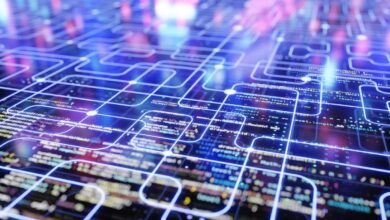Gartner: AI’s ‘Jobs Chaos’ Is Coming – Here’s What to Expect

▼ Summary
– Many have feared an AI “jobs apocalypse,” but Gartner predicts a more nuanced “jobs chaos” with varied workplace adaptations instead.
– AI is expected to transform rather than eliminate jobs, automating specific tasks rather than entire roles wholesale, according to recent studies.
– Gartner forecasts that AI will likely create more jobs than it eliminates, with major changes expected between 2028 and 2029.
– The company outlines four possible AI workplace models, ranging from AI handling most tasks to humans using AI to revolutionize their fields.
– Businesses must stay adaptable and prepare for multiple scenarios, as the long-term impact of AI on jobs remains uncertain and fluid.
The integration of artificial intelligence into the workplace is poised to reshape the labor market in profound ways, yet the outcome is far from a simple story of job elimination. According to recent analysis by market research firm Gartner, the era ahead will be characterized not by a widespread “jobs apocalypse,” but by a period of “jobs chaos”, a complex transition affecting virtually every industry. This transformation will see businesses adapting in diverse ways as they integrate intelligent systems capable of outperforming humans in certain tasks, while still relying on human skills in other critical areas.
Rather than a uniform shift impacting all roles equally, AI is expected to create a mosaic of new workplace arrangements. Recent studies from Georgia State University and the hiring platform Indeed support this nuanced outlook, indicating that AI is more likely to automate specific tasks and skills rather than entire occupations. Gartner anticipates this wave of change will fully materialize between 2028 and 2029, and importantly, the firm projects that AI will ultimately generate more jobs than it eliminates.
Gartner has identified four potential workplace models that may emerge as organizations navigate this transition. Each represents a different balance between human labor and AI capabilities.
In the first scenario, a reduced number of human employees focus on responsibilities that AI cannot manage. Customer service serves as a prime example, while many routine interactions can be automated, complex or emotionally sensitive issues still benefit from human involvement.
The second model involves AI operating a business with minimal human oversight. Here, artificial intelligence takes over most or all operational functions, leaving only a handful of roles for people.
A third possibility sees a large workforce using AI tools to enhance their productivity, enabling them to accomplish more work in less time without reducing headcount.
Finally, the fourth and most forward-looking model envisions professionals leveraging AI to fundamentally reinvent their industries. In healthcare, for instance, AI could empower doctors to deliver unprecedented levels of personalized treatment by analyzing patient data at scale.
Helen Poitevin, a Gartner analyst, emphasized that the fluid nature of AI development makes long-term predictions difficult. Speaking at the Gartner IT Symposium/Xpo, she advised business leaders to remain agile and open-minded as they prepare for an AI-integrated future. “No matter which scenario executive leaders pursue, they must be ready to support all four,” Poitevin stated. The key takeaway for organizations is to stay adaptable, preparing for multiple potential outcomes rather than committing to a single fixed path.
(Source: ZDNET)




